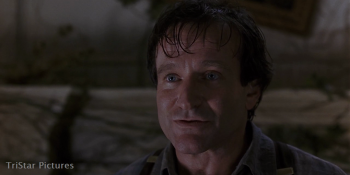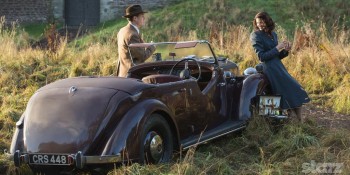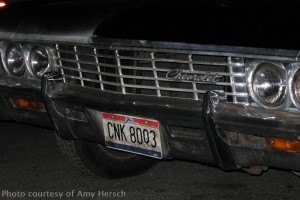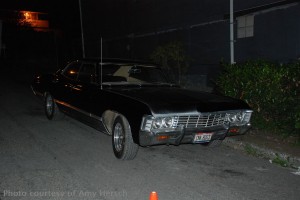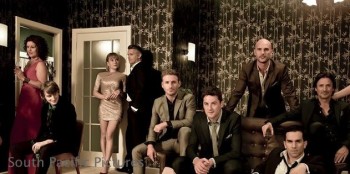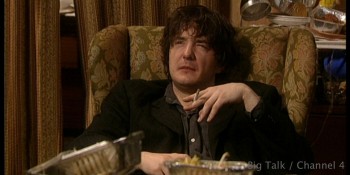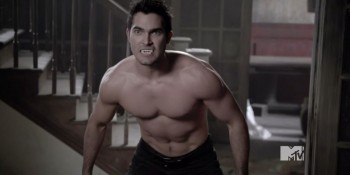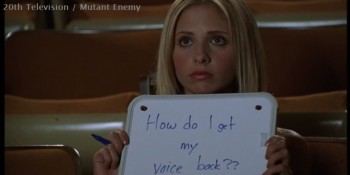Superheroes, whether in comics, movies, or animated television shows, make up our modern mythology. Like the mythology of the ancients, the stories we tell represent our greatest hopes, fears, and ideals. Then what does it say about us when our heroes kill?
Is there anything wrong with Superman killing General Zod to protect an innocent family? Does Wolverine’s use of deadly force to stop mass murderers make him any less heroic than Batman? These questions, though applied to fictional characters, hold great insights into who we are in the era of the drone and preemptive war.
The conflict is one of differing philosophies. Opponents of the death penalty and drone strikes share a philosophical mindset with some of our greatest fictional characters. These heroes, like Batman, Spider-Man, and Aang from Avatar: The Last Airbender, are famous practitioners of deontology, a philosophy that states that actions themselves, regardless of consequences, have an intrinsic moral value. Under deontology, stealing is wrong whether it is for personal gain or to feed your family, and killing is morally reprehensible even if it is done to save the lives of millions.
Some of the strongest heroes in fiction, including Superman and Goku from Dragon Ball Z, try their hardest to maintain this philosophy, but have occasionally made the difficult decision to do the unthinkable when circumstances have dictated. Goku, for example, gave his antagonist, Frieza, numerous opportunities to leave with his life, but the Super Saiyan was left no choice but to fire back at the monster in self-defense.
Some heroes find the morality of killing dangerous men to be much less morally ambiguous. These heroes practice the philosophy of utilitarianism, which states that the moral value of an action is directly linked to its consequences. Therefore, if killing the Phoenix saves the lives of thousands or millions of innocent people, doing so is the morally correct decision. Wolverine, who did kill Phoenix in X3, is perhaps the most obvious example, but other heroes who practice utilitarianism include such squeaky clean characters as the Power Rangers and the Jedi.
Spider-Man’s origin story offers a perfect example of the conflict between deontology and utilitarianism. When a robber passes by Peter Parker, he is faced with a moral decision. Deontology dictates that Peter stop the thief. Stealing is, itself, a moral wrong, and Peter, possessing the power necessary to easily stop him, should have. He didn’t, and the decision had dire consequences. Utilitarianism states that not stopping the thief only became wrong when it later led to the death of Peter’s Uncle Ben. By not apprehending the man, Peter made the wrong moral decision under both utilitarianism and deontology.
But does the equation change when the stakes are raised? When Peter defeats his enemies, such as Green Goblin, he hands them off to the authorities, where they are then expected to go through the legal process. Should Peter have killed these villains instead? Under the American legal system, we expect citizens to only use lethal force as a last resort. And under deontological reasoning, killing is always wrong. But these villains are left with the ability to escape custody and further harm civilians. In one of the most famous examples, Green Goblin, who Spider-Man had refused to kill in the past, ended the life of Peter’s girlfriend, Gwen Stacy. The utilitarian philosopher would then argue that Peter’s refusal to kill the Goblin was wrong, because it led to Gwen’s death.
Under deontology, Spider-Man can’t be held responsible for the blood on the Goblin’s hands. Using the same philosophy, Batman also can’t be blamed for Joker’s murder of the second Robin, Jason Todd, or his crippling of Barbara Gordon. Batman is defined by his refusal to kill, even under the most extenuating circumstances. As shown in the animated movie Under the Red Hood, when forced to choose between saving the life of the Joker and killing the Red Hood, Batman found a third way by stopping Red Hood’s firearm, ironically saving the man who caused so much grief.
Letting someone die, not just killing, was a moral wrong in Bruce Wayne’s mind, and Batman could not let that happen, even though Red Hood’s arguments about the Joker were all true. Thousands died at the hands of the Joker, and because of his insanity, the legal system would never put him to death. According to Red Hood, Batman had a moral obligation to save the lives of the Joker’s future victims by killing the mad man when he had the chance. By not doing so, the blood of the Clown Prince of Crime was on the hands of the Caped Crusader.
Batman’s refusal to kill has long been the basis for his unlikely friendship with the Man of Tomorrow, even if Zack Snyder and David Goyer completely missed that. Superman, despite having the power of a god, has refused for most of his 75-year history to kill even the most dangerous of villains. The few times in which he behaved differently have been so rare that they either were used to reshape the DC Universe or were done in alternate continuities.
When Clark Kent finally crosses that line and allows himself to kill, it always acts as the beginning of a slippery slope. In the ongoing comic story Injustice, the Joker tricks Superman into accidentally killing Lois Lane and her unborn baby before detonating a nuclear weapon in the middle of Metropolis. Clark finally snaps and kills the Joker — something Batman had always refused to do.
Bruce immediately comes into conflict with Superman, but chooses to bide his time and hope that his friend will realize his mistake. Instead, Superman slips further into the role of seemingly benevolent dictator. After killing the Joker, Superman decides it’s time to stop playing with kid gloves, and he begins taking out those who have committed atrocious acts. Dictators fall, villains are killed, and the descent of the world’s greatest hero into mass murderer begins. Once the Rubicon has been crossed, Clark finds it increasingly easy to kill, even ending the life of Green Arrow over a simple misunderstanding in front of his own parents.
Batman stands by his philosophical beliefs and becomes the only man able to bring down the Dictator of Steel. But if he is given the opportunity, will Bruce Wayne be morally obligated to end the life of a super killer? Obviously, Batman says no, but other heroes would answer differently.
In Age of Ultron, the Marvel world is plunged into darkness by a robot-killing machine. When Wolverine learns that Ultron was built by Hank Pym, the original Ant-Man, he decides to do what is necessary to save the world. Wolverine travels back in time to kill Pym before he even conceives of Ultron. Pym, at that time, was still heroic, a member of the Avengers. He had yet to do anything wrong, but Wolverine, believing in utilitarian ethics, chose to end the man’s life before his creation could cause any harm. The plan ultimately backfired, but Wolverine’s willingness to kill a still-innocent man provokes an interesting question about what makes someone heroic.
The Jedi of the Star Wars universe don’t have the benefit of time travel, but they do take seriously their duty to maintain the peace, even if that means killing. Unlike with Superman and others, there is no hesitation in the Jedi when it comes to taking down those who would harm the innocent. The Jedi, like the Green Lantern Corps and the real-world police, are charged with protecting the innocent and are thus allowed to kill when necessary.
In Phantom Menace, Obi-Wan Kenobi seemingly ends the life of the Sith Lord, Darth Maul, due to his personal feelings that the Sith are evil. We, as members of the audience, are inclined to agree with his decision, but have a very different point of view when it is Anakin Skywalker who behaves in the same manner. In Revenge of the Sith, Anakin cuts off the hand of Jedi master Mace Windu, allowing Darth Sidious to kill him. Anakin, like his old master, was taking action against a man he perceived to be committing an evil act — after all, Mace Windu was technically trying to enact a coup.
The death of Mace Windu led to 30 years of oppressive rule under the Empire. Does this result make Anakin’s actions any more reprehensible than Obi-Wan’s? Under utilitarian ethics, the answer is yes, but using deontology, both actions hold equal moral weight.
The beauty of fictional superheroes, however, is that morally difficult questions can be solved with creative writing. A hero does not have to choose between killing the supervillain or letting innocents die. Batman can stop Red Hood’s gun, Superman can turn back time, and Goku can use the Dragon Balls to wish his enemies back to life with new moral compasses. Unfortunately, these third choices can be seen as copouts at best, and poor storytelling at worst. One of the worst offenders of this copout came about as part of the most compelling and philosophically challenging stories ever told. On Nickelodeon, at least.
Avatar: The Last Airbender follows the story of Aang, the fabled Avatar. The Avatar is styled on the Dalai Lama, if the Buddhist leader could shoot fire from his hands. The Avatar is reincarnated upon death and is distinguished from other element benders by his or her ability to bend all four elements: Earth, Fire, Water, and Air. Aang is the sole survivor of the Air Nation, a society of pacifist monks whose abilities were used primarily in defense.
Aang is told his entire life that it is his destiny to defeat the Fire Lord, who has conquered most of the four nations and brought oppression to the people. No one doubts the Fire Lord is evil, but Aang is still a little boy and is unable to accept that killing his nemesis is the answer. When all of his human mentors tell him that he has no other choice, Aang looks to the spirits of his past lives — the previous Avatars — for another answer. Unfortunately, they all declare the same thing: the evil of the Fire Lord must be defeated, and Aang must accept his destiny by killing the man.
Even during the final fight, Aang refuses to do what is expected of him but finds a third way. The Avatar uses his powers to take away the bending ability of the Fire Lord, relegating him to the status and danger level of a regular human. Aang is able to stick to his deontological beliefs even with the fate of the world on the line. Sure, it was contrived and came with no foreshadowing, but it spoke to a strong ethical ideal and seemed to split the difference between deontology and utilitarianism. Aang was able to stand by his beliefs and still save the world, never compromising. But even the spiritual leaders of this mystic world from across the ages found nothing wrong with killing a dangerous man. Ultimately, it was Aang’s personal morality, not a universally held social morality, that prevented the Avatar from crossing a line he was unwilling to cross.
Perhaps this is the difference between Batman and Superman as well. Batman’s aversion to death comes from the trauma of seeing his own parents gunned down before him. Superman only ever experienced such loss in distant ways, and his morality was formed only by lessons from virtuous parents. Maybe this is why writers find it so much easier to see Superman finally crack and kill people. Wolverine’s willingness to kill comes from his understanding that the world is a much darker place, and it is sometimes necessary to do something morally questionable for the greater good.
These characters’ personal ethics about taking the lives of others does not dictate whether or not they can be considered heroes any more than it can in the real world. But it is these ethics that define the characters we love and that lend them their staying power. They give us examples to live by, just as ancient mythology did for our ancestors.
What do you think? Is Batman to blame when the Joker kills innocents? Should Aang have been prepared to do the unthinkable for the fate of his world? Is Wolverine any less heroic for killing an innocent Hank Pym? Did Zack Snyder make a mistake by having his Superman kill General Zod?
These questions are a lot more relevant now, in a world of terrorist attacks and mass shootings. Unfortunately, we don’t have the luxury of writers who can concoct new powers for us when the time calls for it, and we may all some day be faced with a difficult decision that makes us rethink our moral codes.
